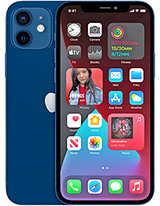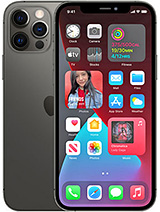iPhone 12 Pro Camera Review - In-Depth with Samples By The Hybrid Shooter
Hello, my friends today we will take a look at the camera setup on iPhone 12 Pro. This year's camera upgrades on non-max models probably aren't as exciting as the last years. There are still some new interesting features and also new hardware. In this video, we will take a look at the camera performance of iPhone, 12, pro's, triple camera setup at the image, quality, camera app and some other camera related stuff. The build quality of iPhone 12 Pro is excellent. I am a big fan of flat edge design and I think that the stainless steel construction looks and also feels great.
I played it safe this time and I got the graphite 512 gigabyte versions regarding the economy. Furthermore, I think that, with this flat edge design, it is less comfortable to halt, but also much more secure, and I probably prefer it that way, especially when shooting in landscape mode. The extra surface on the edges allows for more secure grip. On the pro version we have the ultra by 13 millimeters, lens white, 26, millimeter and standard 52, millimeter lens, also incorrectly known as the telephoto lens. This is the same setup as with the 11 pro, and I think that it is perfect combination.
All cameras on the new iPhones use 12 megapixel sensors, after using some high-res sensors on other phones. I am completely convinced that 12 megapixels is the best choice for a hybrid smartphone camera. At this stage of technology, the main camera still uses a 26 millimeter lens, but now it has f 1.6 aperture. The image quality in terms of the details is generally very good for a smartphone. It still uses a relatively small 1 over 2.55 inch sensor, but it can capture a respectable amount of detail. That means that it doesn't have to use a terrible amount of sharpening and the images look a little more natural overall.
I am actually pleasantly surprised by the image quality of the main camera. The ultrawide camera uses an extremely wide 13 millimeter lenses. The image quality with this camera is the weakest out of the three lenses, but it makes up for that by providing very dramatic field of view. The image quality is still more than sufficient for social media. It greatly increases the versatility of 12 pro camera setup, which is the most important thing with an ultra-wide lens.
I have used basically the same ultra white camera, a lot on 11 pro, and I'm generally glad that it is available on all new iPhones 52 millimeter standard or telephoto lenses is the one that you will only get on the pro version.50 millimeters is, in my opinion, a great versatile focal length, and it is definitely nice to have the image quality is actually decent. It uses a smaller sensor than the main camera, but that focal length makes the images look less generic. I can say that I would definitely miss it on the non-pro version regarding the colors and the processing. First, it is very consistent on all three cameras place. The level of saturation is relatively high, but it isn't that much of an overkill.
I can imagine more realistic, color reproduction, but I think that the public will like these colors a lot one of the most impressive things about the 12 pro is the HDR and the deep fusion, especially in the sharp December sun. It does a great job of preserving highlights. I was especially impressed by this scene. This is the extreme dynamic range. As you can see, it preserves the color in the sky.
There is no noise whatsoever in the shadows, no weird HDR sharpening and the white balance is perfect. This is a very impressive piece of computational photography. The most important upgrade of the camera, for me personally, is yet to come in iOS 14.3, and that is the pro raw that will basically combine unprocessed raw capture with deep fusion image stacking. This should provide very high, dynamic range and much less noise in challenging scenes. You can already shoot raw using an app such as halite 2.
, the normal rows capture, solid amount of dynamic range and offer reasonable flexibility for editing. I've been editing these laws using accent, AI and structure AI in laminar AI, and I am very happy with the results that I can get this way regarding the video that continues to be a major strength of iPhones. Again, the processing is just great just like with the stills. The amount of details is very good. The colors are very nice, and the footage is not too over sharpened, even in HDR situations.
This is again a benefit of 12 megapixel sensor, which makes the processing much easier. Of course, it can shoot 4k up to 60p with all three cameras. As expected, the video quality decreases if you use an ultra-wide lens, but it is still good enough. If you want the best video quality possible, I still recommend using film pro that enables higher nitrate manual controls and even option to shoot flat footage. Film pro also allows 25 frames per second capture, which is the reason why I only use film pro for video.
A new video feature on iPhone.12 is Dolby Vision. If you turn it on, the iPhone will use different color space shooting 10 bites, and it will store dynamic, HDR metadata. Generally, it works great. It can basically bring HDR capabilities from still shooting to video. There is just one issue, and that is the compatibility.
If you try to play this video on an incompatible device, you might get incorrect exposure or other issues. One of the most impressive things about the video is the stabilization that is pretty incredible. The main camera combines optical image, stabilization and electronic image stabilization and the static shots. Look basically like on a tripod. This walking sample on uneven surface is just shocking for me, I would have easily guessed that this was shot on a gimbals which is not the case, as you can see in the shadow.
Electronic image stabilization on the ultrawide lens is great as well and more than sufficient for ultra-wide angle. Telephoto camera uses optical image stabilization, and it is very effective as well. Overall, the stabilization is a huge strength of all three cameras, but especially on the main camera. The night mode on 12 pro works, much like on the 11 pro, so it can take long exposure shots combined with some stacking. The results are pretty good.
I also like that it is not trying to turn night into day. I still don't think that this is the biggest strength of the 12 pro, but if you need to take low light shot with an iPhone, it certainly helps for the first time the night mode is also available on the ultra white camera. That just doesn't work very well. The low light shots are better than without it, but still not good enough. In my opinion, regarding the autofocus, there is not much to talk about on the main camera.
It is basically perfect. The focusing is extremely fast 100 accurate and there is no hunting even in the low light. The same is truth about both stills and video. It slows down a bit on the telephoto lens in low light, but it is still very good. Overall, the ultrawide lens has fixed focus, which is fine, because at that depth of field, everything is in focus anyway.
The camera app in iOS 14 is very similar to previous versions. The controls are still very basic. There is the new panel with some settings, but there is no pro modes or anything like that. It is a good app for an average user. There are the usual modes, such as the panorama and portrait, and it is simple to use one thing that I greatly miss in the stock.
App is the option to shoot 25p video, which is a bummer for filmmakers in pal region, for more advanced users. I still recommend headlight 2 for stills and film pro for video one more thing that affects the iPhone photography. A lot is the display. The regular pro uses 6.1 inch display. This is, in my opinion, very usable size, big enough to consume content, but not in the phablet region.
I am generally happy with that choice. Although the 5.8 inch display was a bit easier to use with one hand, the other specs are carried over from 11 pro, so the pixel density is 460 pixels per inch and the maximal brightness is 800 nits in SDR mode and 1200 nits in HDR mode. This is a great display overall with very accurate, color reproduction, and it is simply nice to look at. So there is not much to say there. Another feature that indirectly affects the shooting experience is the battery.
It is actually a little worse than on d11 pro. As I was testing the camera, I still managed to take about 250 photos in a day a couple of video clips, and I used the phone normally for other stuffs while being connected to 4g network, and I still had about half of the battery left. The only thing that drains the battery a lot is the film pro, but that is to be expected. To sum up, I can say that I'm generally happy with the camera performance on iPhone 12 Pro. It is kind of limited by the smaller sensor size, but within those limitations it is probably as good as it can be.
The images are very detailed. Thanks to the new lens, the HDR processing is incredibly capable and quite tasteful. The video is probably even more impressive, especially the stabilization is outstanding. I can also say that I, like the rest of the 12 pro the display is great. A14Soc is a great piece of silicone and I appreciate the reintroduction of flat edge design.
As I mentioned, the most interesting feature for me will be the pro raw which will be introduced in iOS 14.3, and I will also make a separate video about that. For now, I can say that I'm happy with the iPhone 12 Pro and I generally recommend it for photo and video enthusiasts. So that's it for this video. Thank you for watching. I hope that you liked this video and that you found it to be useful, stay tuned for more videos and maybe consider subscribing.
If you don't want to miss my future content, I appreciate your feedback in form of thumbs up or thumbs down. If you would like to ask anything or share opinion, please do some in the comments section and see you next time.
Source : The Hybrid Shooter


























